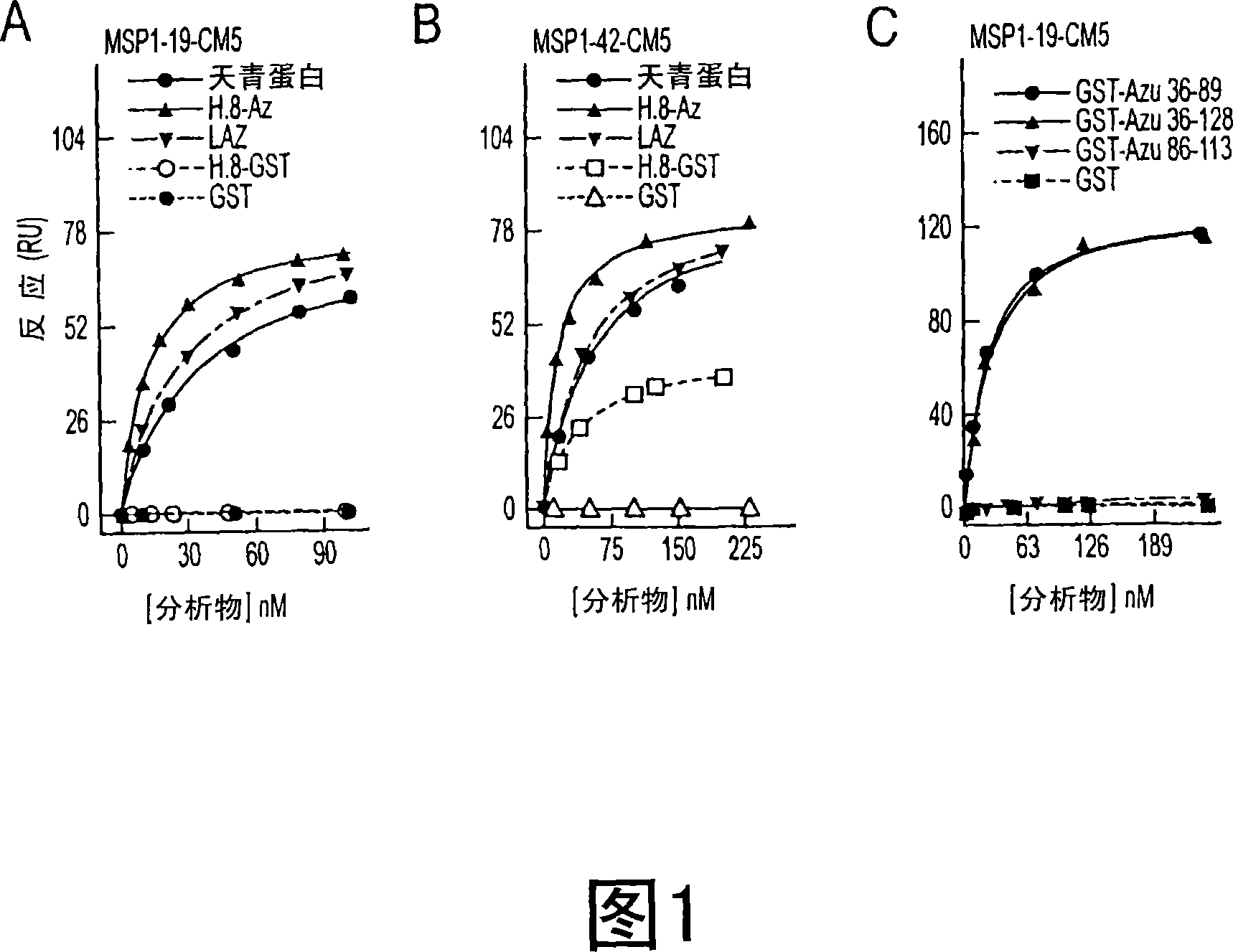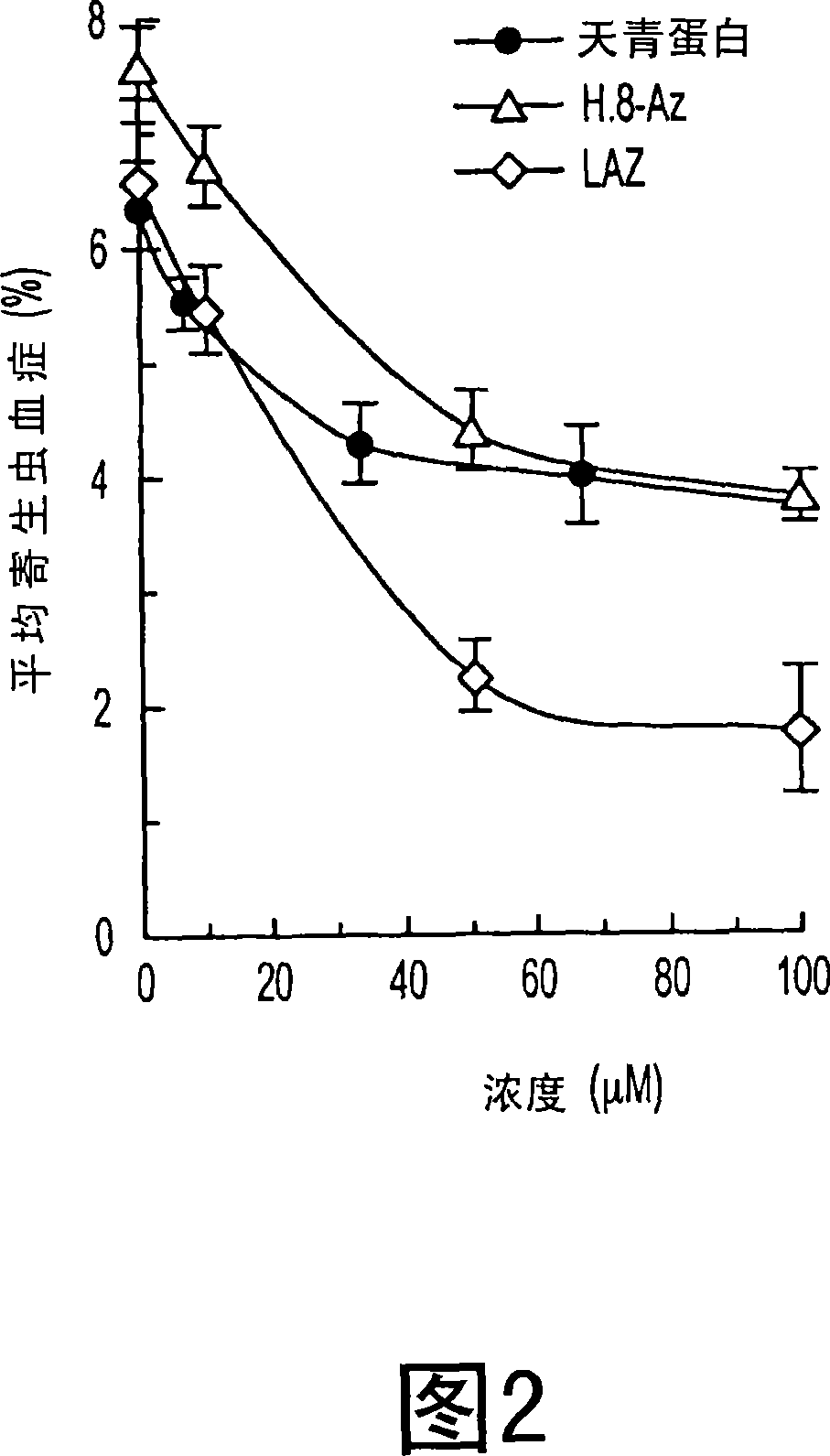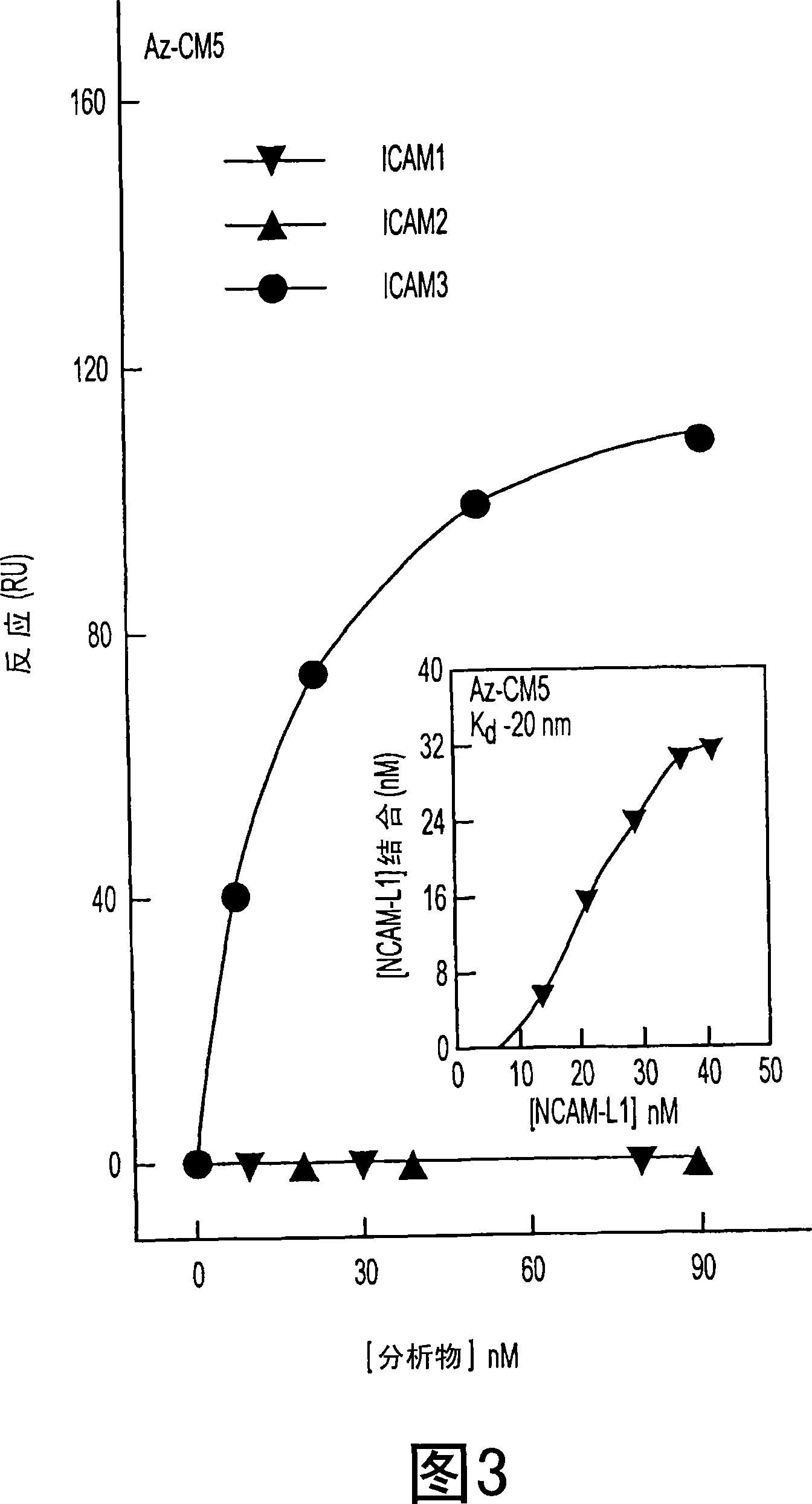Compositions and methods for treating malaria with cupredoxin and cytochrome
- Summary
- Abstract
- Description
- Claims
- Application Information
AI Technical Summary
Problems solved by technology
Method used
Image
Examples
Embodiment 1
[0220] Example 1: In vitro inhibition of Plasmodium falciparum parasitemia by cupredoxin and cytochromes
[0221] Cupredoxin bacterial wt azurin, M44KM64E azurin, ferrothiocyanin and cyanobacterial plastocyanin and cytochrome Pseudomonas aeruginosa cytochrome c 551 , human cytochrome c and S. laminatus cytochrome f were tested in a normal red blood cell (RBC) assay at a concentration of 200 μg / ml 30 hours after incubation. In these experiments, normal RBCs were washed twice with serum-free medium and resuspended to 10% hematocrit in complete RPMI. 200 μl of 10% Hct RBC was added to each well of 24 wells (final 2% Hct, 1 mL), in addition to 30 μl of complete RPMI containing 666 μM of recombinant cupredoxin or cytochrome protein at a final concentration of 200 μM. Schizont stage parasites were prepared by centrifuging late stage cultures through a Percoll pad at 3200 rpm for 10 minutes. For infection, a volume of 500 μl of 4 × 10 6 parasites / hole. Plates were incubated for 3...
Embodiment 2
[0224] Example 2: Inhibition of Intracellular Replication of Plasmodium falciparum by Ferrothiocyanin
[0225] To determine whether bacterial redox proteins were able to inhibit intracellular replication of Plasmodium, erythrocytes were loaded to an intracellular recombinant protein concentration of 200 μg / ml using hypotonic ghost preparations. Cells were then washed, resuspended, and infected with schizont-stage parasites (Plasmodium falciparum) as described in Example 1 . RBC ghosts were incubated for 19 and 40 hours to make Giemsa smears.
[0226] Compared to infection of normal erythrocytes in Example 1, only ferrothiocyanin reduced total parasitemia in loaded cell ghost cultures. At 19 hours, there were no significant differences in invasion and ring formation, with empty ghosts at 5.0±0.4% and ferrothiocyanin-loaded ghosts at 4.5±1.0%. However, at 40 hours, ferthiocyanin-loaded ghosts had lower levels of infection. No major effect was seen at 19 hours with any bacteri...
Embodiment 3
[0229] Example 3: Structural homology between azurin and the Fab fragment of the G17.12 monoclonal antibody complexed with PfMSP1-19
[0230] Previous studies have shown that cupredoxins display structural similarities to the variable regions of members of the immunoglobulin superfamily. (Gough & Chothia, Structure 12: 917-925 (2004); Stevens et al., J. Mol. Recognit. 18: 150-157 (2005)). The DALI algorithm (Holm & Park, Bioinformatics 16:566-567 (2000)) was used. Azurin (1JZG) from Pseudomonas aeruginosa was searched for structural similarity in 3D databases. Azurin exhibits structural similarity to the Fab fragment of the G17.12 mAb complexed with the Fab fragment of the G17.12 mAb of the PfMSP1-19 fragment of the MSP1 schizont surface protein of P. falciparum. (Pizarro et al., J. Mol. Biol. 328:1091-1103 (2003)). (Table 6) Azurin also exhibits structural similarity to ICAM-1 (Table 6), which is involved in cerebral malaria and may be involved in the sequestration of P. f...
PUM
 Login to View More
Login to View More Abstract
Description
Claims
Application Information
 Login to View More
Login to View More - R&D Engineer
- R&D Manager
- IP Professional
- Industry Leading Data Capabilities
- Powerful AI technology
- Patent DNA Extraction
Browse by: Latest US Patents, China's latest patents, Technical Efficacy Thesaurus, Application Domain, Technology Topic, Popular Technical Reports.
© 2024 PatSnap. All rights reserved.Legal|Privacy policy|Modern Slavery Act Transparency Statement|Sitemap|About US| Contact US: help@patsnap.com










